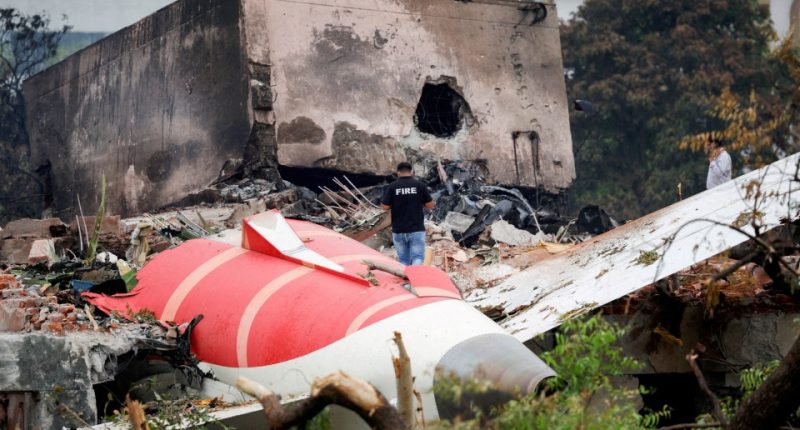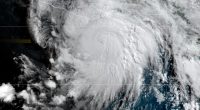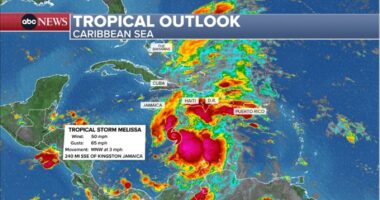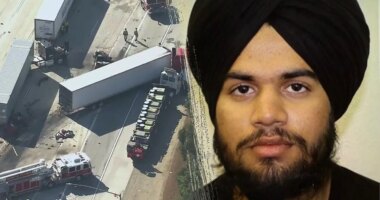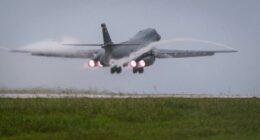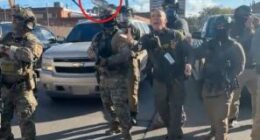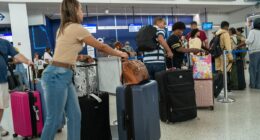Share this @internewscast.com
An Air India executive has disclosed a significant update regarding the tragic crash in Ahmedabad, revealing that the Boeing aircraft had “recently undergone maintenance.”
The head of the airline stated that the ill-fated plane had a spotless record and two engines that were serviced not long ago—details that come after experts focused on a potentially revelatory video possibly elucidating the catastrophe.
Air India Flight AI171 smashed into a doctors’ hostel and exploded into a huge fireball last week.
All passengers and crew – except for one miracle survivor – died in the horror accident on June 12 which killed at least 270 people.
Air India chief N Chandrasekaran hit back at “speculation” on what caused the London-bound flight to crash a minute after take-off.
And he said that a probe into what exactly caused India’s worst air disaster in nearly three decades could take a month.
Chandrasekaran, who also leads the parent company Tata Group, informed India’s Economic Times: “There are various conjectures about human error, airline practices, engine performance, maintenance—speculations of all sorts.”
“But the fact that I know so far is this particular aircraft, this specific tail, AI171 has a clean history.”
In a shocking revelation, the chairman added that the Dreamliner’s right engine was “new” and installed in March, just three months prior.
Meanwhile, its left engine was serviced in 2023 and due for its next maintenance check in December, Chandrasekaran explained.
“Both engine histories are clean,” he emphasised.
Sumeet Sabharwal, the experienced captain of the doomed flight, had more than 11,500 hours of flying experience.
And his co-pilot and first officer Clive Kunder, had over 3,400 hours.
The boss highlighted that the two pilots were “excellent” and “great professionals”, and warned that speculation should avoid “jumping to any conclusions”.
The Air India chair’s bombshell revelation comes as crash investigators believe an emergency power system kicked in just before the plane went down – raising questions about whether the engines were working properly.
Analysts agreed that a small turbine generator deployed as the Boeing 787 flew towards the doctors’ hostel, after a “game-changer” video emerged.
The HD video showed a “protrusion on the belly of the aircraft” with a “little grey dot” beneath it.
Commentators allege this was a system called Ram Air Turbine (RAT) poking out from the fuselage of the plane, which failed to climb more than 450ft.
Commercial airline pilot Steve Schreiber, known as Captain Steve, explained: “Many aeroplanes have it. It is just behind the wing on the right side of the aeroplane, there is a little door that holds it in.
“It looks like a little Evinrude motor, it’s a little two bladed prop.
“The purpose is to provide electrical and hydraulic pressure for the aircraft on an extreme emergency.”
Steve explained there are three things which could cause the RAT to deploy on a 787: “A massive electrical failure, a massive hydraulic failure, or a dual engine failure.
“But I think the fact the aeroplane is mushing out the sky gives the idea it was a dual engine failure,” he said.
The tragic smash is the first ever fatal accident involving a Boeing Dreamliner.
India’s Aircraft Accident Investigation Bureau is leading the investigation, alongside its UK and US counterparts.
Chandrasekaran said he had been in touch with both Boeing and GE Airspace, the firm that made the plane’s engines.
He added that he was in contact with them “at the highest levels”.
The Aircraft Accident Investigation Bureau is analysing the plane’s black boxes but hasn’t commented on its findings.
52 Brits died on board the flight, but London local Vishwash Kumar Ramesh managed to cheat death when he escaped the blazing inferno following the crash.
Theories have swirled over how the sole survivor managed to narrowly escape death when he was sat in seat 11A during the horror smash.
What is Ram Air Turbine?
A RAM Air Turbine, known as RAT, is a small wind turbine fitted into planes which generates power in the case of emergency.
It will deploy if the main engine stops generating power for any reason.
When activated, the small turbine stick out from below the wing or fuselage, and harnesses the wind power caused by the plane’s speed.
The airflow makes it spin round, in turn generating electricity which can be used.
This happens using a hydraulic pump or electrical generator linked up to the turbine.
A key feature of RAM is that is acts independently from the aircraft’s engine and other generation means, meaning it can in theory be used to create power even when the main systems go down.
